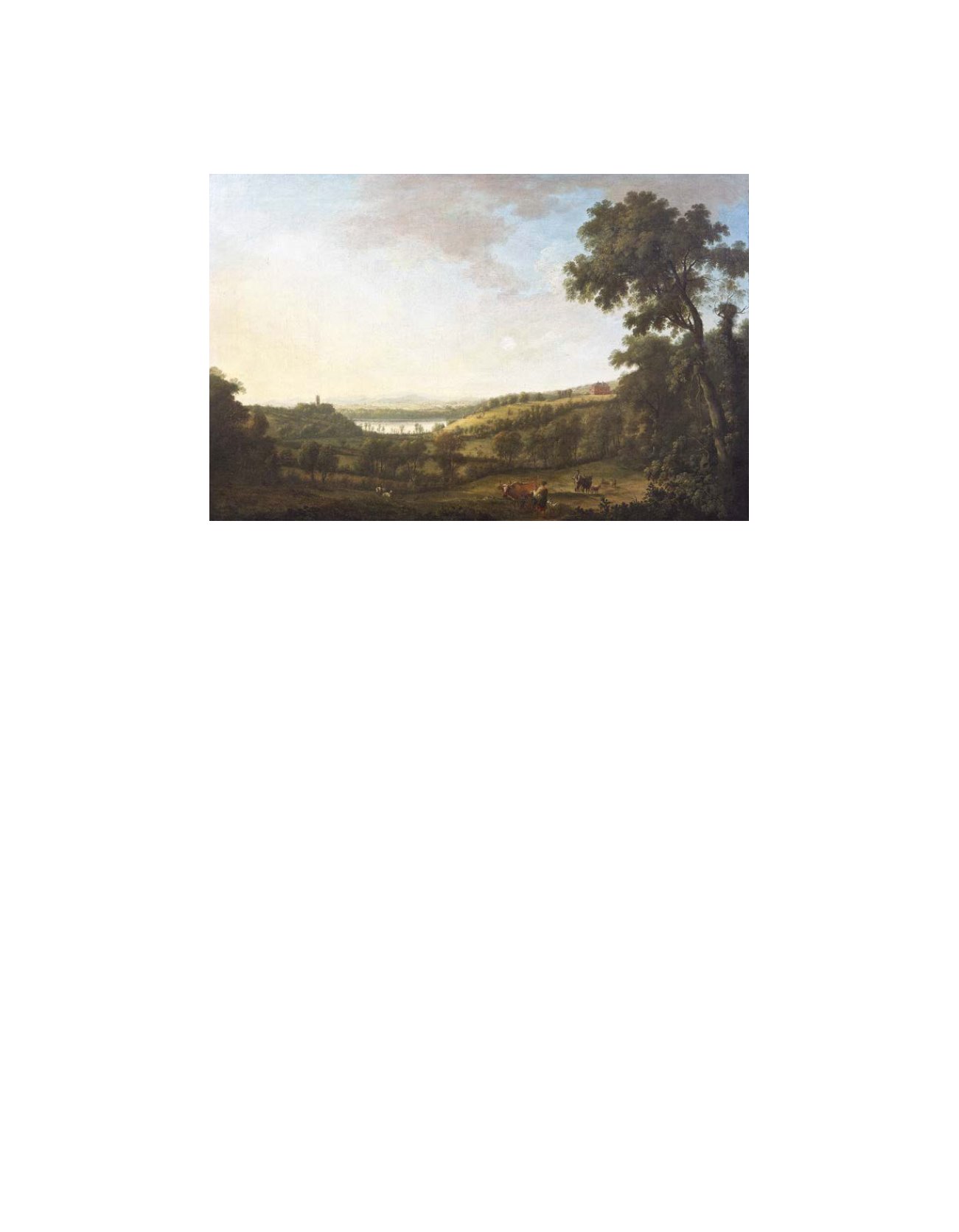
Country House Collections at Slane Castle 13
th
&14
th
October 2013
191
640
WILLIAM ASHFORD (1746-1824)
A View of Dawson’s Grove, Co. Monaghan (c.1774)
Oil on canvas, 96 x 148cm ;
together with the print by Pouncy after William Ashford, engraved after the original painting, and Sandby’s View of Dawson’s
Grove from the Mausoleum
€70000 - 100000
This work is typical of the Claudean style topographical views of estates or demesne paintings, produced by Irish landscape
painters of the eighteenth century. Not the first artist to produce landscapes of Dawson’s Grove, Ashford’s contemporary,
Thomas Roberts 1748-77), had around the early 1770s, been commissioned to paint a series of six views, which Ashford may well
have studied before painting his own landscape (Laffan and Rooney, pp. 92-93, 106).
Born in Birmingham, William Ashford moved to Dublin in 1764, initially employed by the Ordnance Office, and his work
involved travel throughout Ireland. He first contributed landscapes to the Society of Artists of Ireland exhibition of 1772. From
the mid 1770s Ashford became known for his demesne paintings, later works including a set of five paintings of Charleville
Forest, Co. Offaly (dated 1801) for Charles Bury, first Earl of Charleville (1764-1835) and six oils of Mount Merrion Park for
Richard, seventh Viscount Fitzwilliam (1804-06, Fitzwilliam Museum, Cambridge). His architectural inclusions were convinc-
ingly painted, most notably the Palladian villa in The Royal Charter School, Clontarf, Co. Dublin (1794, NGI). Much respected
in his own lifetime, in 1813 he was elected President of the SAI and in 1823, the year before he died, first President of the newly
formed Royal Hibernian Academy.
The house, Dawson’s Grove, Rockcorry, Co. Monaghan, seen on the right of the view, was the seat of Thomas Dawson MP, who
was created Baron Dartrey (1770), Viscount Cremorne (1785) and later Baron Cremorne (1797). Built around 1770 in brick, it
consisted of three storeys over a basement, with a pedimented breakfront and was probably inspired by the designs of Edward
Lovett Pearce for the nearby Bellamont Forest (1730). In 1778, Dawson’s Grove was mentioned by the Rev. Daniel Beaufort as:
‘a new brick building, neat and well contrived but rather heavy both in its external appearances and inside decorations
’ (cited
by Bence-Jones, p. 100). Destroyed by fire, Dawson’s Grove was replaced in 1846 by Dartrey, an Elizabethan Revival mansion
(demolished c. 1950).
Ashford can be placed at Dawson’s Grove in June 1773. The Rev. Burrows, tutor of Richard Dawson, noted that ‘Mr. Ashwood’


